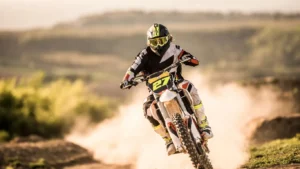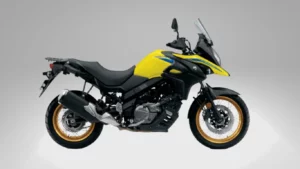Picture this: you’re driving along a rough trail, dirt flying up behind your tires, the peace and tranquility of nature surrounding you. Off-roading can be the adventure of a lifetime, an opportunity to explore tracks less treaded and landscapes often overlooked. But it’s not without its risks. Whether you’re a seasoned off-roader or preparing for your first journey, understanding the best safety practices and precautions can mean the difference between an exciting exploration and a potentially dangerous situation.
Safe off-roading isn’t just about the right equipment or the sturdiest vehicle—it’s about knowledge, preparation, and a responsible attitude towards nature and yourself.
In this guide, we’ll arm you with all the knowledge you need for a safe and enjoyable off-road adventure.
Understanding the Basics of Off-Road Riding
Off-road adventures are thrilling. Yet, safety must be top priority all times. Well-understood off-roading rules and practices can significantly enhance your safety and adventure excitement. So, let’s dive into ten key safety facets.
Firstly, know your vehicle inside out. Understanding vehicle features such as four-wheel drive configurations, ground clearance and approach/departure angles can boost safety and the overall off-road experience. Make sure it’s adequately equipped for off-roading.
Secondly, always wear seat belts and protective gear. Often neglected due to the excitement, these necessities can potentially be lifesavers. Along with a well-equipped vehicle, they form a solid safety protocol.
Lastly, safe speed is crucial when off-roading. Driving too fast can cause accidents and damage to your vehicle, even if it may seem tempting.
Off-roading is fun and meant to be safe. Stick to these safety rules to enjoy a thrilling yet safe ride. Look forward to the rest of our Things to Know series by Tom Severin of Badlands Off-Road Adventures for more safety practices and tips.
The Significance of Riding Gear in Ensuring Safety
Undoubtedly, proper riding gear plays an indispensable role in ensuring your safety during off-road adventures. This extends beyond just your typical seatbelts to include helmets, gloves, and goggles. The purpose of each piece is to provide you with additional protection and minimize the risk of injuries in the event of unforeseen mishaps.
Helmets are designed to shield your head from severe damages, gloves guard your hands against abrasions or cuts, while goggles preserve your vision from dust and debris. Remember, even accidents at low speeds can have grave consequences. Therefore, these safety accessories are not to be overlooked.
The Essentials of Dressing Right for Off-Road Adventures
One of the essential components of off-road adventures is not just your vehicle, but also what you wear. Your clothing choices can significantly impact your safety. Wearing appropriate attire for the weather is a good start.
For instance, if you are going on an off-road adventure in cold weather, layers of warmth-trapping, moisture-wicking materials are a great choice. When you are in a hot desert climate, you should aim for materials that provide sun protection and promote cooling.
The Role of Safety Gear in Off-Road Excursions
However, clothing is not the only aspect of your attire that matters; safety gear plays an essential role in safeguarding you during any off-road excursion. It mainly serves as an insurance policy in case accidents occur, reducing the risk of severe injuries.
This includes items like helmets, gloves, and goggles which protect your head, hands, and vision. Imagine riding on a dusty trail, debris flying towards your face, or a sudden tumble – these safety gear items protect you in these scenarios that are all too common in off-roading.
Fastening Your Seatbelt: A Basic Yet Crucial Safety Step
Surprisingly to some, the basic act of fastening your seatbelt plays a vital role in off-road adventures. Seatbelts aren’t just for typical road driving. When off-roading, they become even more critical, protecting you when traversing unpredictable and challenging terrain.
Despite the slower speeds often associated with off-road driving, the risk of accident and injury remains. Fasten your seatbelt securely, adjusting the lap belt against your hips and ensuring the shoulder belt is across your chest, not your neck, for optimal safety.
Safe Driving Speeds for Off-Roading
Driving at a safe, manageable speed is crucial when off-roading. It allows you greater control of your vehicle and offers more time to react to any obstacles that might suddenly appear on your path.
Remember, off-roading is not a race, but an adventure, and safety should always come first.
Preparation: The Key to Safe Off-Road Experiences
Above all, remember that the key to a successful and safe off-road trip lies in preparation – following basic rules and guidelines, wearing the correct gear, practicing trail etiquette, and undertaking pre-trip inspections can make the journey safer and more enjoyable.
Picking the Right Off-Road Vehicle for Your Adventure
Setting out with the right off-road vehicle, like ATVs or UTVs, sets you up for a thrilling and safe adventure. These vehicles are popular for their ease of handling on challenging terrains.
Your choice should factor in aspects such as ground clearance, approach angles, and four-wheel configurations. It’s crucial to know your vehicle inside out to safely navigate through rugged terrain.
The right set of off-road tires is significant. They provide superior traction and control, thereby enhancing your off-road driving experience. Never underestimate the importance of tires in your adventure.
Finally, look for other essential off-road features like sturdy suspension, differential lock, and more in your chosen vehicle.
In essence, a successful and safe off-road journey begins with the right vehicle. So, choose wisely!
Essential Pre-Trip Inspections for Off-Road Vehicles
Getting ready for an off-road adventure? Thorough vehicle and gear inspection is paramount. This helps ensure everything is in top-shape and your adventure goes smoothly.
First up, check your vehicle’s oil, transmission fluid, and coolant levels. Then, inspect the brakes. Functioning brakes are key to avoid mishaps during the trip.
Next, examine the tires. Off-road tires are particular and need to be adequately inflated and well-maintained. Look into your vehicle’s suspension system as well. The more the ground clearance, the better your vehicle can handle tricky terrains.
Apart from your vehicle, your gear matters too. Double-check your winch, recovery gear, first-aid kit, water, food, and fuel—all should be in good condition and within easy reach.
Consistent maintenance checks are your key to a trouble-free off-road adventure. Remember, safety begins with the state of your vehicle and gear.
Mapping Your Route: The First Step to a Safe Off-Road Adventure
Ready for an off-roading escapade? Begin your prep with a solid plan of your chosen route. This step is crucial for spotting potential hazards and selecting a trail that matches your vehicle and skill. Research the area, study maps, consult local riders, and keep an eye on time management during the adventure.
While route planning is essential, it shouldn’t suppress your spontaneity. Prepare well so you can enjoy your excursion in a secure manner. Soak up the beautiful landscapes that come with every twist and turn on your path.
Remember to also share your itinerary with someone reliable. They should know your whereabouts, approximate timings for each journey segment and expected return time. This is a safety net – if something happens, they can alert the authorities.
Use tools like a GPS device, smartphone apps, or physical maps for mapping. Also, identify potential emergency exits during route planning, as this can save time if you need to make a swift exit.
Importance of Riding in a Group and Communication Methods
- Operating off-road vehicles in a group creates a buddy system that can be beneficial in case of emergencies or unexpected situations.
- When traversing tricky terrain, a fellow rider named as the ‘spotter’ can provide helpful advice and guidance, helping reduce the risk of mishaps.
- Establishing clear communication signals with your group before setting out is a key safety step. This could include standard hand signals, radio frequencies, or whistle codes.
- The benefits of off-roading in a group also extend to learning and enhancing off-road skills as more experienced riders can share their knowledge and tips.
- Groups should ideally stay within sight of each other and regularly check for all members, particularly in complex or diverse terrains.
- Brief each other on the route, potential challenges, and emergency escape routes prior to starting the adventure. This ensures everyone is on the same page about the journey ahead.
- Although off-roading can sometimes be a solitary sport, embarking on these adventures in a group can add another layer of enjoyment, camaraderie, and safety to the experience.
The Role of Fitness in Safe Off-Road Riding
When you think of off-road driving, physical fitness might not spring immediately to your mind. Yet, it plays a significant role in your overall safety. Off-roading is physically demanding, requiring strength, flexibility, and endurance. It’s not only about managing the controls, but it’s about fighting against gravity, absorbing shocks, and making quick reflexive movements.
A regular fitness routine can help build stamina and increase your body’s resilience, reducing the potential for fatigue-induced mistakes and injuries. Remember, your ability to respond quickly and effectively to sudden challenges on the trail can often spell the difference between a thrilling adventure and a potentially harmful situation.
Why Physical Fitness Matters for Off-Road Safety
While it might seem unexpected, your fitness level plays a substantial role in off-road riding safety. Just like any sport, off-roading also requires a degree of physical strength, stamina and mental agility. If you’re not fully fit, tackling rough terrains might be a challenge, potentially impacting your safety and the overall off-road experience. So, it’s crucial to incorporate regular exercise into your lifestyle.
Overcoming Off-Road Challenges with Fitness
The physical demands of off-roading prove to be an uphill battle for those not in the peak of health. You need to handle the steering wheel firmly, maintain balance on uneven terrains, and react quickly to unexpected obstacles. Consistent strength training, aerobic exercises, and agility drills can significantly enhance your ability to navigate these challenges and steer clear of potentially dangerous situations.
Fitness and Fatigue: Maintaining Alertness on the Trail
Fatigue poses a significant risk in off-roading, leading to slower reaction times and a higher likelihood of accidents. A fit body is more resilient to fatigue, allowing you to take on extended periods of off-roading with minimal exhaustion. Regular cardio workouts can enhance your stamina and delay the onset of fatigue, ensuring you’re alert and responsive on the trail, regardless of the duration.
Beyond Physical Fitness: The Mental Edge
Mental fitness also underpins safe off-road riding. The ability to anticipate risks, make split-second decisions, and stay focused under pressure is just as, if not more, important as physical strength. Mental exercises such as meditation and stress management could help enhance your mental acuity, making you a safer and more proficient off-road rider.
Ways to Learn and Improve Your Off-Road Riding Skills
- Off-roading driving classes are invaluable for learning diverse terrain-driving techniques under expert supervision.
- Joining off-road driving forums and groups can connect you with experienced off-roaders who share useful firsthand knowledge.
- Thoroughly understanding your vehicle’s manual is crucial—it details your vehicle’s capabilities and limitations.
- Educational off-roading videos can help clarify the complexities of driving in different terrains and offer advanced techniques.
- Regular practice enhances familiarity with your vehicle’s off-road handling and responses.
- Participation in organized off-road events provides a safe environment to navigate courses under experienced officials and improve your skills.
Using Technology for Safe Off-Road Riding
In today’s digital age, technology forms an integral part of off-road riding adventures. Whether it’s utilizing GPS navigation systems for tracking routes or exploiting the power of smartphones for emergency calls, technology can be a lifeline during off-road ventures. Preloaded mobile applications, specifically designed for off-road rides, can also enrich your experience by providing access to refined maps, weather predictions, and useful riding tips.
Furthermore, tech tools like vehicle-mounted cameras not only capture unforgettable moments but also provide the ability to review footage in case of an incident, thereby promoting safety. By leveraging technology, off-roaders can heighten their safety measures, making the ride enjoyable, worry-free, and secure.
Harnessing GPS Technology for Navigation
Off-the-beaten-path locales can be part thrill and part challenge. However, you don’t want to lose your way. How can we rectify that? The answer is GPS technology! GPS devices, and even smartphone apps, can guide you through unfamiliar areas, highlighting the terrain and potential hazards ahead.
Communication Devices: Staying Connected Out There
The unpredictability of off-road adventures demands you remain connected even in remote areas. Two-way radios are a godsend for maintaining communication between vehicles in a convoy, while satellite phones could prove to be your safety net in areas with spotty cellular reception.
Adopting Off-Road Oriented Apps
Thanks to modern technological advancements, there’s an app for that — yes, even off-roading safety! These apps can provide vital real-time information, such as weather updates, terrain conditions, fellow off-roader locations, and even instruction manuals for vehicle repair.
Utilizing Vehicle-Mounted Camera Systems
What’s ahead, behind, or beneath your off-road vehicle might be out of your sight, but it should never be out of your mind. This is where vehicle-mounted camera systems come into play. They can deliver live feeds and help you navigate tricky terrains and overcome unseen obstacles with relative ease.
Handling Difficult Terrains: Sand, Mud, and Water Crossings
- Specific techniques are needed for different terrains. For example, driving on sand involves maintaining speed and using wider tires to spread the vehicle’s weight and prevent sinking.
- Maintain a slow speed on muddy paths to avoid skidding. Use tires with deep treads for extra grip.
- Driving through water crossings requires evaluating the water’s depth and current. A snorkel prevents the engine from ingesting water, while skid plates can shield the undercarriage.
- Off-road obstacles can emerge unexpectedly. It’s important to know when to reverse course to avoid risk.
- Consider stepping out to assess challenging terrains, this could reveal unnoticed hazards and allow appropriate plan adjustments.
- Successful off-roading significantly depends on tire choice, as traction varies across terrains.
- Lastly, it’s crucial to understand the rules of off-roading. This includes knowing rights of way and safe winching practices.
Conclusion
Ultimately, combining safety and adventure allows you to effectively appreciate off-roading. Always respect guidelines, use technology, stay fit and consider the environment. Remember, off-roading is about responsible exploration, not reckless challenges. By practicing safety, you’re equipped for any terrain and help preserve nature. Happy adventuring!
Adventure safely, adhere to established guidelines, embrace technology, and respect your environment. Remember, off-roading is not just about the thrill, but about exploring with respect for yourself and surroundings. This approach not only ensures your safety but also preserves these natural environments for future explorations. Explore, engage and enjoy responsibly!






